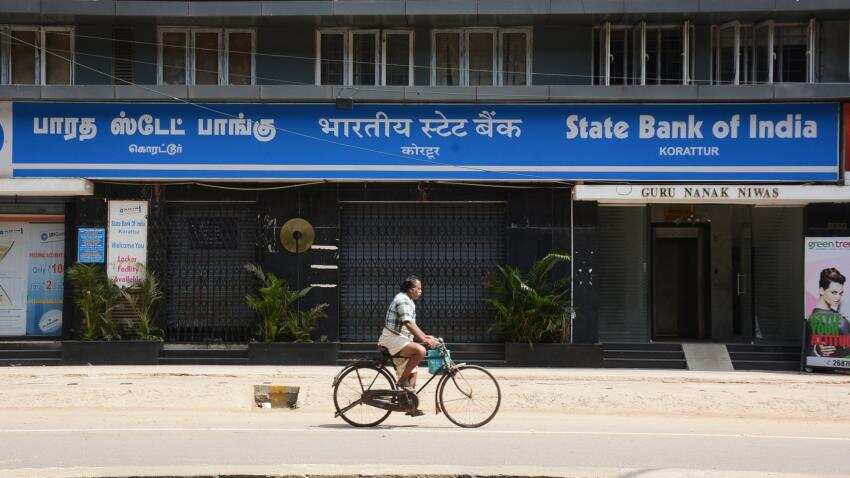State Bank of India's asset quality likely to remain stable ahead; SMEs, Agriculture pose risk
SBI is considered among the most important banks in India. Despite of stress seen in assets during Q1FY18, this bank still has the potential to overcome its NPA issue in coming quarters.

While affirming the ratings of India's largest lender State Bank of India (SBI), Moody's Investor Services on Monday mentioned that the bank's financial profile will remain stable for next 12 - 18 months.
Stability in asset quality will be because SBI has been proactively recognising legacy credit issues, while it has de-risked its new origination book over the last two to three years, it said.
SBI's asset quality metrics deteriorated significantly after the merger with associate banks, and also because of the economic disruptions in the last few quarters.
By end of March 2017, SBI witnessed rise in gross non-performing assets (GNPA) to 9% on consolidated basis compared to 6.9% on a solo basis. Also as on June 2017, the consolidated GNPA increased further to 9.9%.
In this regards, Moody's attributes that the negative pressure on SBI's asset quality was only one-off effect of the merger.
However, as per the agency, there are some categories which cause downward risk for SBI's asset quality and may rise in the coming quarters.
Within the corporate book, SBI has identified potential weak loans — the so-called watchlist loans — that could slip within the financial year ending March 2018. Such loans represent 1.3% of its gross loans as of June 2017.
Furthermore, risks could emerge in the bank's small and medium enterprises (SMEs), as well as retail and agriculture loan book, particularly if economic indicators remain weak. SBI's performance in recent quarter (Q1FY18) provides some evidence to this trend, as seen by 60% of the bank's new NPLs (slippages) emerging in these segments.
During Q1FY18, SBI's domestic fund based outstanding in agriculture sector stood Rs 1,89,100 (11.76% share) second highest after the infrastructure (which comprised of sectors like power, telecom, road & ports) at Rs 2,54,219 crore with share of 15.81%.
Last week, SBI launched its first-of-its-kind product called as 'SME Assist' for Micro, Small & Medium Entrepreneurs (MSME)
Under SME Assist, SBI will provide a short term working capital demand loan (WCDL) to MSMEs on their input credit claims under GST at a concessional rate of interest for a period of nine months. WDCL in SBI will be sanctioned outside Assessed Bank Finance (ABF) at 20% of the existing fund based working capital limit or 80% of input tax claim due on purchases – whichever is lower .
Despite the asset quality issues, Moody's stated that SBI's operating profits have broadly remained stable, reflecting its strong core franchise — which has strengthened further after the merger with associate banks — business diversification, as well as increased focus on businesses that generate higher return on capital.
Moody's also believes there is a very high probability of government support for SBI, in the event of stress on the back of three reasons.
They are - firstly SBI's sizeable 23% share of total system deposits till Q1FY18 and 21% of system loans; secondly status as the largest commercial bank in India; and lastly designation by the Reserve Bank of India (RBI) as one of the country's three major and systemically important banks.
Currently, government owns a 57.07% stake in SBI and is visibly involved in the management of the bank, including the appointment of senior managers and setting of key performance indicators.
Additionally, Moody's expects SBI's profitability profile will gradually improve, as credit costs come down.
Get Latest Business News, Stock Market Updates and Videos; Check your tax outgo through Income Tax Calculator and save money through our Personal Finance coverage. Check Business Breaking News Live on Zee Business Twitter and Facebook. Subscribe on YouTube.
RECOMMENDED STORIES

Looking for short term investment ideas? Analysts suggest buying these 2 stocks for potential gain; check targets

SBI 444-day FD vs PNB 400-day FD: Here's what general and senior citizens will get in maturity on Rs 3.5 lakh and 7 lakh investments in special FDs?

Rs 3,500 Monthly SIP for 35 years vs Rs 35,000 Monthly SIP for 16 Years: Which can give you higher corpus in long term? See calculations

SCSS vs FD: Which guaranteed return scheme will give you more quarterly income on Rs 20,00,000 investment?
04:30 PM IST










 Rama Mohan Rao Amara becomes SBI managing director
Rama Mohan Rao Amara becomes SBI managing director India's GDP expected to fall below 6.5% in FY25 amid slowdown in GDP growth in second quarter: SBI
India's GDP expected to fall below 6.5% in FY25 amid slowdown in GDP growth in second quarter: SBI SBI Funds Management Limited appoints Nand Kishore as Managing Director and Chief Executive Officer
SBI Funds Management Limited appoints Nand Kishore as Managing Director and Chief Executive Officer SBI to open 500 more branches in FY25, take overall network to 23,000: Finance Minister
SBI to open 500 more branches in FY25, take overall network to 23,000: Finance Minister Attention SBI Customers: EMIs of home loan, personal loan go up as PSU bank hikes lending rate
Attention SBI Customers: EMIs of home loan, personal loan go up as PSU bank hikes lending rate